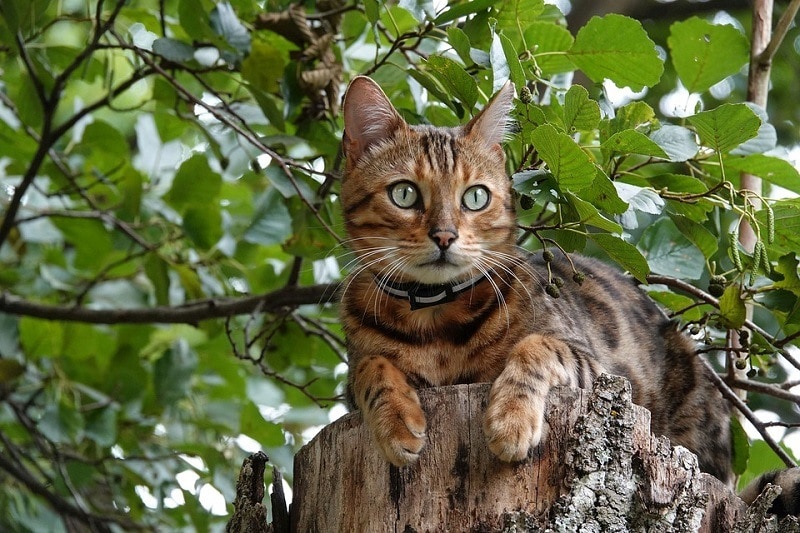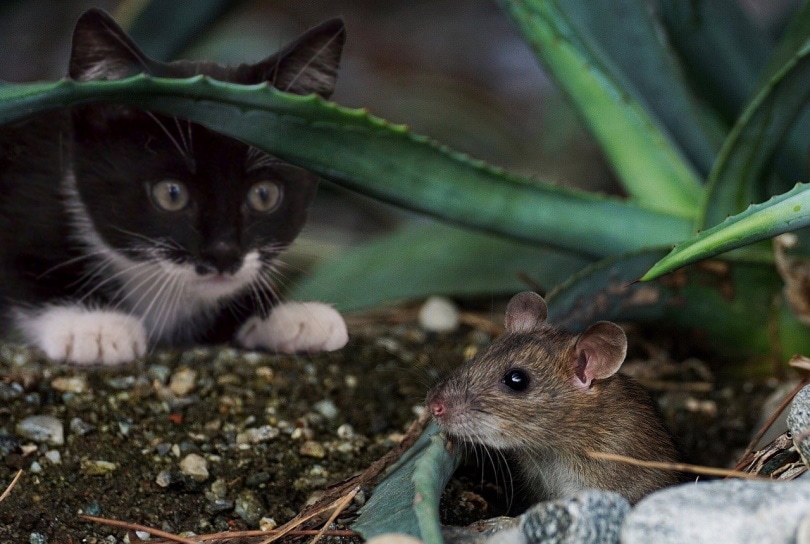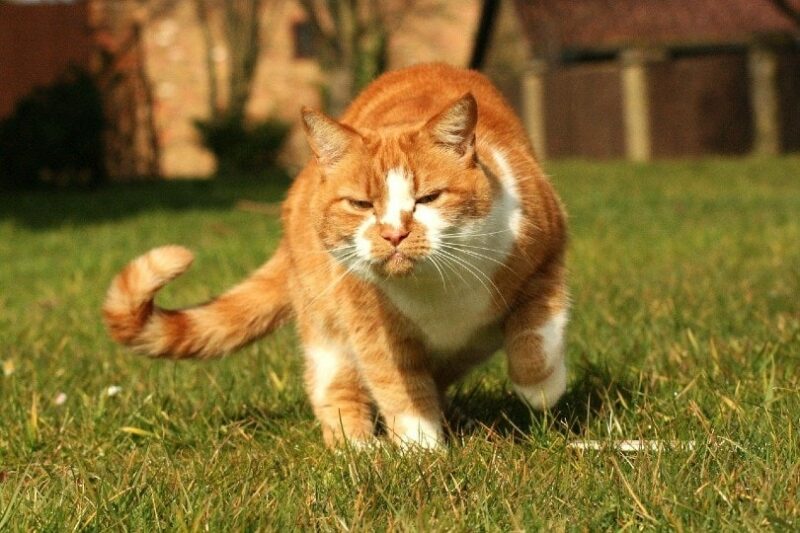
If you’ve ever taken a moment to really look at your cat’s whiskers, you might be taken aback at just how long they are. With things like your hair and nails in mind, you may think that they’re too long, but that’s actually not the case at all. A cat’s whiskers are long because length is a part of their geometric parameters which allow them to function as sensory hairs.
That said, there’s a little wiggle room. A few diseases that are sometimes seen in cats can affect their whiskers. Broadly speaking, a cat’s whiskers are about as long as the cat is wide, but they can be shorter or longer.
If you’ve ever wondered about what exactly the heck a cat’s whiskers do anyway, whether they’re anything like a dog’s whiskers, and more, you’ve come to the right page.
Why Cat Whiskers Are So Long
A cat’s whiskers are technically called vibrissae, and they each have highly sensitive nerve endings at their base. The role of a whisker is to provide a cat with more information about their environment, particularly the nearby surroundings of their face. The average cat has roughly 12 whiskers on each side of their muzzle divided into three rough rows of four for a grand total of 24 whiskers (on their face). They also have whiskers on their limbs, which are often much more difficult to spot, particularly in long-haired cats.
The primary reason why a cat’s whiskers are so long is because of the way they work. Unlike an insect’s antennae, whiskers do not have any sensors along their length. Instead, how whiskers work is that when they touch an object, they bend. This signal is then transmitted to the base of the whiskers, where the nerve endings then pick up the information that something is near the cat’s face. In turn, this provides a cat with more spatial awareness.
The longer a cat’s whiskers are, the more likely they are to touch something around their face (or feet), providing more information. Therefore, a whisker’s length (also known as its intrinsic curvature) is a major part of its performance ability. Therefore, whiskers are long because the longer they are, the better they would be to function as sensory hairs!

What Else Do Whiskers Help With?
Whiskers do more than just help a cat better appreciate their immediate surroundings. To be more specific, let’s look down below at all the other functions that a cat’s whiskers serve.

Are Cat Whiskers Like Dog Whiskers?
It’s a short hop to wonder if cat whiskers are anything like the shorter, stiffer hairs that sprout out of a dog’s muzzle, and yes, they are! Just like with cats, a dog’s whiskers help them navigate in low light, sense objects, and convey their emotions.
The difference is that dogs have more numerous but shorter whiskers, with up to 20 roughly shorter whiskers on each side of their muzzle for a total of 40 whiskers (on average). That sounds impressive; however, a dog’s primary hunting method is different from that of a cat’s, which is probably why their whiskers appear different.
Do Cats Lose Their Balance Without Whiskers?
You may have heard that a cat will lose their balance if their whiskers are cut or damaged, but that’s really an urban myth stemming from a fundamental misunderstanding about what whiskers exactly do. Cats detect changes in their environment through their whiskers (whenever anything causes them to bend), and such things can look like black cat magic if you don’t know any better.
It’s a lot more nuanced than that, though, and it all goes back to the ear. Like us humans, cats’ ears act as tiny accelerometers that help orient their bodies, maintaining their balance. In addition, their balance is also mediated by their cerebellum (a structure in their brain) and other components of their nervous system. Whiskers aren’t involved in that and don’t have any direct effect on balance, but they do have an effect.
For instance, a cat who loses whiskers on one side of their muzzle will seem to “miss” objects on that side and have a harder time navigating around their familiar home. However, that does not actually have anything to do with their innate sense of balance, which remains excellent even with some missing whiskers.
Nonetheless, because a cat’s whiskers are such a vital part of their anatomy, you should never purposely cut off or trim your cat’s whiskers.

Why Are My Cat’s Whiskers Wavy?
People sometimes notice that their cat’s whiskers seem to appear wavy. Interestingly, a disease that’s relatively common in cats, feline leukemia, caused by the feline leukemia virus (FeLV), can cause a cat’s whiskers to appear wavy. Therefore, if you notice your cat’s whiskers appearing wavy, you should consult your veterinarian for more information.
A blood sample taken from your cat will allow your veterinarian to see if your cat is positive for the virus. Though this condition has no cure in a strict sense, it is preventable by vaccinations.
Conclusion
Cat whiskers are surprisingly complex little instruments that help them find and trap prey, explore more freely, and even signal their innermost feelings. Their length is impressive because of the way they function. The longer they are, the more effective they are.
Because a cat’s whiskers are such an important part of their anatomy, it is important to not cut them for aesthetic reasons. In addition, if you notice that their whiskers seem to be of an odd, wavy shape, you should consult your veterinarian for a thorough medical checkup on your beloved feline.
Featured Image Credit: Uschi_Du, PIxabay






